From knocking the snot outta them one day to thinking maybe you should take up knitting. That’s what it feels like to fish walleyes.. The thing with walleye fishing is there are so many different ways to catch them. Everything from a simple, slow approach to fast and aggressive; there’s usually a technique that’ll work.
I’m going to break down my favorite ways to fish walleyes throughout the spring & summer. Hope you enjoy it!.
How to Fish Walleyes in the Spring
Spring can be a magical time of the year to fish walleyes. The ice is off, and the water is warming up. We do a lot of pitching and casting early in the spring, which is one of my favorite ways to catch walleyes. But first, you have to find them.
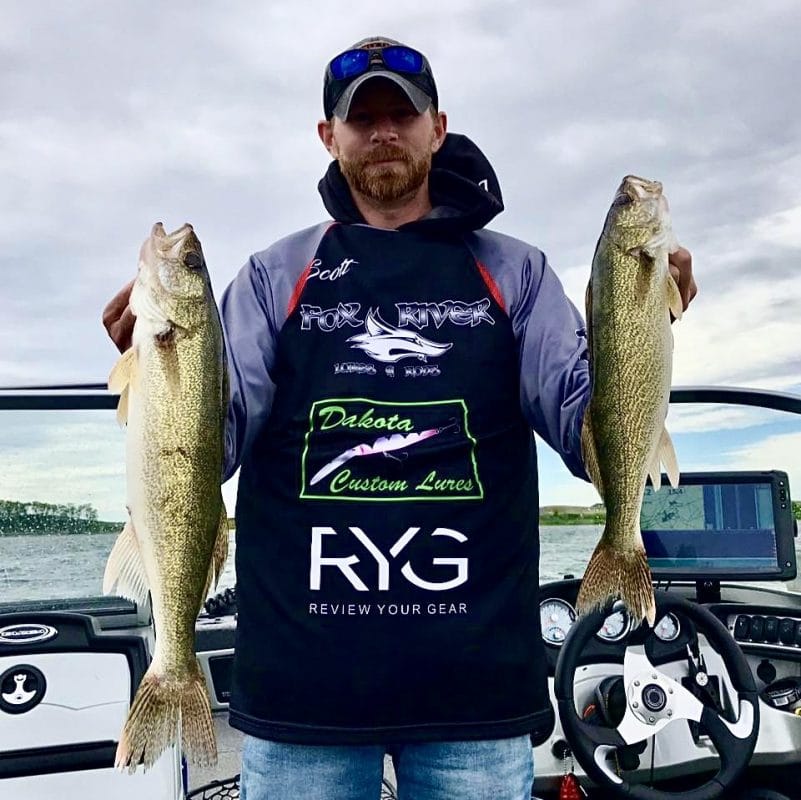
When Do Walleyes Spawn?
The first thing that can help you catch walleyes in the spring is knowing where they spawn. Walleyes will start to spawn when water temps hit mid 40’s typically between 44-48 degrees. They tend to spawn in the same area year after year in shallow water (2-6′) and on rocks and gravel areas. If you know where these fish are moving to and from during the spawn it will help you almost every year.
The key will be to find shallow areas (3-12′) between their spawning grounds and the main lake structure. These areas will include rock piles, rocky shorelines, and some fresh emerging vegetation.
Most of the time in the spring if the fish are in a positive mood you’ll find them on top of the structure actively feeding. Fishing vertically and aggressively on top of these fish will usually end with a full bag. When the fish turn off or go “lockjaw”, you might have to slip off to the edges of the structure and slow your presentation down.
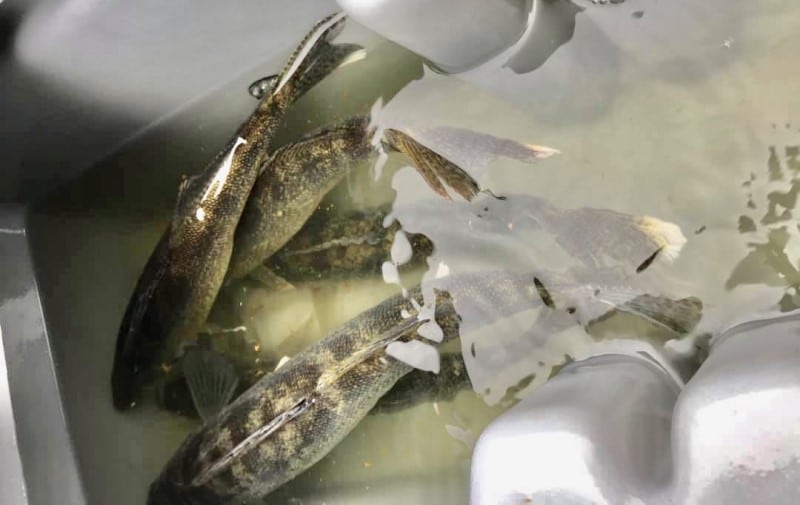
SpringTime Techniques to Fish Walleyes
If you talk to a lot of anglers when it comes to springtime eyes, they can’t get away from the jig and a minnow. While this tactic can and will catch fish but for me, there are just too many other options to be stuck with a jig and minnow. My favorite is using plastics, just something about that “THUMP”.
Pitching Plastics/Swimbaits
Pitching plastics are a great way to fish walleyes and cover some water. They can be fished small and slow for that colder water finicky bite, or big and fast for the more aggressive bite. Very early spring, I’ll use a 3-3.5″ plastic with a ⅛ oz jig head. This setup is nice to stay above the weed line with a nice and slow retrieve.
As the water starts to warm up a bit I’ll switch to a 4″ and a 1/4-⅜ oz jig head. Also, a lot of guys like the cast and steady retrieve approach to this, so don’t be afraid to add pauses every few turns of the handle. You would be surprised at how many times I’ve been hammered during the pause. Also, add a couple of pumps with your rod to get the bait to pop up a few feet and let it drop before reeling in.
Here are my choices for fishing walleyes this way:
- VCM Mooneye Jigs
- WNC Marble Eye Jigs
- Berkley Ripple Shad
- Walleye Assassin Turbo Shad
- B Fish N Authenx

Jerk Baits
Again this is a bait you can run fast and cover a lot of water when the walleyes are getting aggressive. But you can also slow it way down and still get great results. Like the swimbaits, you’ll wanna incorporate the retrieve and pause technique. You want this bait to run about a foot or foot and half about the bottom of the lake.
Casting crankbaits for walleyes is a great way to get kids involved as well.
If you plan to fish walleyes with jerk baits then you need to have these lures in your tackle box.
Casting Crankbaits
Casting crankbaits to fish walleyes can be deadly once the water starts to warm up a little bit and you can get these walleyes to chase. Also, this is another bait that can be fished pretty slow but has the option to be burned back to the boat when on super aggressive fish. The nice thing is you can run these over rocks without worrying too much about getting hung up.
I like to run mine fast enough to bang off the bottom a few times but slow enough where I’m staying about a foot above the bottom. The main downfall with pitching cranks is the fact they can be a little difficult to cast on windy days.
If you’re going to fish walleyes with crankbaits, there are a few staples you’ll need.
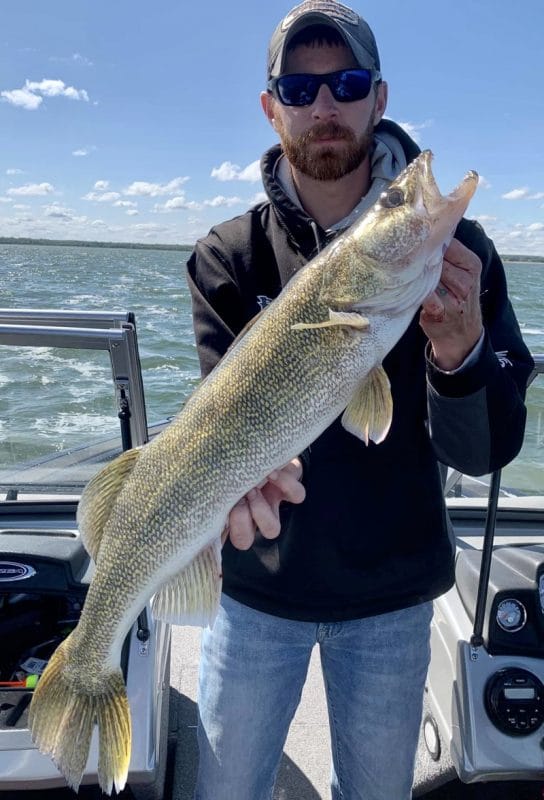
Slip Bobbers to Fish Walleyes
Fishing slip bobber for walleyes is one of the techniques that just doesn’t get enough credit for putting fish in the boat. A very simple and very effective way to fish walleyes. It covers everything from aggressive fish to the slow and finicky bite. I actually like to use this method once I find a good pod of fish. Search them out with swimbaits and drop a bobber right on top of them. Gives a guy time to relax, maybe have a bite to eat, but keep fishing.
I like to use a smaller jig(1/8oz) to start with and move up in size(1/4-3/4oz) as I move out deeper. Here is the tackle I recommend.
Fishing Walleyes During the Summer
The great thing about fishing in the middle of summer is you can catch walleyes pretty much any way you want to. There are a lot of anglers that think that as soon as the water temps warm up all the fish move out deep. An area that gets overlooked year after year is the walleyes up shallow.
When I say shallow, I’m talking less than 10 feet of water. If there is baitfish around, there is a good chance something is up there to eat them. Look for the weed beds that have some areas/ lanes in them where the fish can move about. Toss some plastics, cranks, or even slip bobber right in these areas.
If there is a nice weed line and you have room to run a boat alongside, try long lining some crankbaits on the edge of it. You’d be surprised how many walleyes hang out in the shallow all year.

I also like to fish walleyes on mid-depth structures(10-25′) this time of year. Rock piles, gravel bars, old shorelines, and deep weed lines are what to key in on during the summer. With weed lines or old shorelines, it makes it easy to run deeper running walleye crankbaits or bottom bouncers and spinners. Rock piles are great if you’re looking to slip bobber, jig or use hard body glide baits.
If you’re going to go deep (25’+), the best options are going to be trolling for walleyes while running lead core or snap weights with your crankbaits.
Another option is to fish a heavier bottom bouncer with a slow death or spinner set up. I also want to remind you that if you are fishing deep you may need to keep all the fish you catch even if it is a 10″ or 30″ fish. When pulling fish from those depths, they’re probably going to get the bends and die eventually.
Fish Walleyes with Crankbaits
Trolling for Walleyes is a great way to catch a lot of fish and cover a lot of water. The great thing is that you can run cranks from 2′ of water to as deep as you need to get to the fish.
If you’re running in shallower water, I like to run planer boards to get the baits into the shallower water as well as away from the boat.
Running deeper water, I’ve become a big fan of snap weights and getting that bait into the strike zone while keeping the amount of line down to a minimum. Depending on conditions, I like to start as fast as possible. I like to stay in the 2.8-3.2 mph range making speed adjustments until I find the magic number.
If I have to get below 2.1 mph, I will switch over to fishing bottom bouncers and spinners.
I like to troll walleyes with the following cranks in the summer.
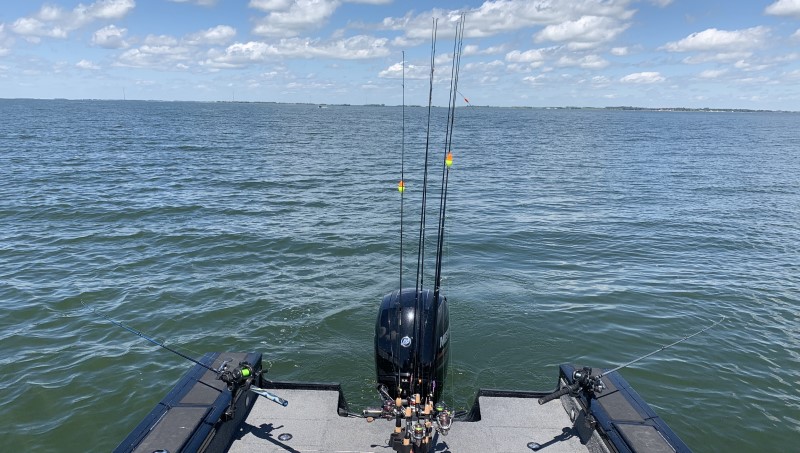
Spinner Blades / Butterfly Blades / Slow Death Fishing
Running spinners and bottom bouncers is a relatively easy system to use when it comes to fishing. You want a bottom bouncer that is heavy enough to drop, fast enough to keep your line at a 45-degree angle, but light enough that it doesn’t drag on the bottom.
You can pair bouncers with spinner rigs, butterfly blades, and slow death fishing. I will usually start pulling around 1.8 mph and do a few “S” turns until I figure out if they want it on the faster or slower side of things.
When you turn, if they bite on the outside rod, they want it faster and if they hit the inside rod, they want it slower. Once you get it dialed in you can go through a lot of bait in quick order.
This is one of the simplest ways to fish walleyes during any time in open water, especially the summertime. It’s no wonder why most people are fishing this way in the areas I frequent. It just works.
Here is the equipment that I use when fishing rigs, blades, or slow death.
- Northland butterfly blades
- Berkley Spinner Rig
- Northland Rockrunner Bottom Bouncer
- Macks Lure Smile Blade
- Mustad Super Death
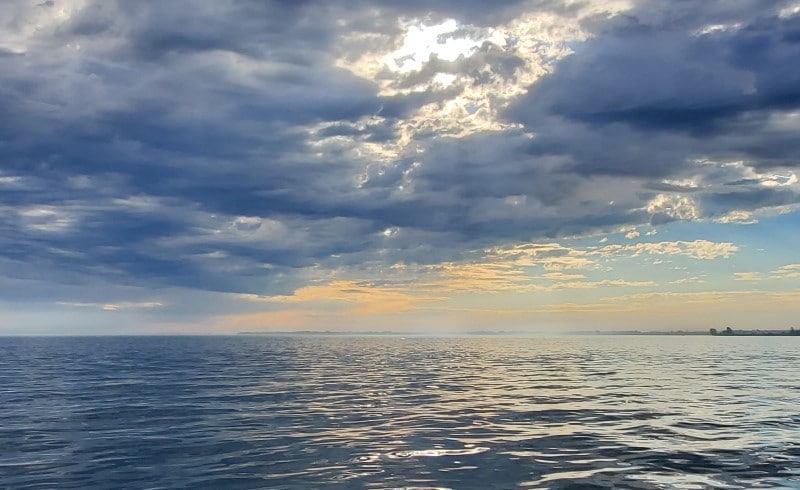
Glide Baits / Jigging Raps
As the years go on I see more and more anglers using glide baits or jigging raps for open water applications. I personally love to use them. One of the main downfalls for me is you seem to lose a few fish on them, and also they get snagged up pretty quick so I go through a lot of them on Devils Lake.
Fishing walleyes with these are super fun and you can cover a lot of water.
It’s a pretty simple technique once you get the hang of it. Cast it out, let it drop to the bottom, give your wrist a couple of quick snaps. Follow it up with letting it fall again with a controlled drop.
Most strikes are going to come on the drop so be ready when going to snap the jig again. Do that back to the boat and repeat. It’s basically the same concept when working with them vertically. Let it drop to the bottom, give it a snap with your wrist (not your arm) and a controlled drop. Every few snaps I’ll let it sit on the bottom for a few seconds and do the process over again.
I cannot stress enough how deadly this presentation has been for walleyes. In fact, more and more tournaments are being won with this presentation in my home waters. Walleyes simply can’t resist the flash of a glide bait.
Here are the glide baits that I recommend trying.
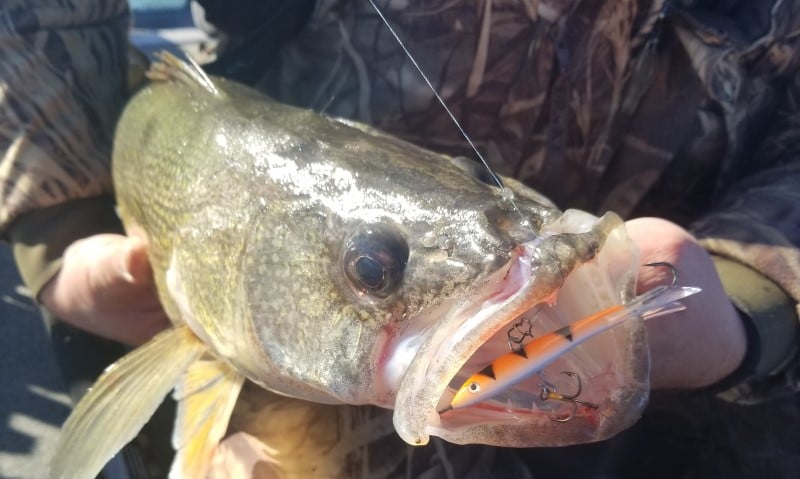
Bonus Walleye Fishing Techniques
When you think of traditional spinnerbaits you think bass fishing. But wouldn’t you know you can catch walleyes on them too? This technique is especially helpful when pulling through flooded timber or casting up into weeds. Check out the article Chris did on this for all the details on how to fish walleyes with spinnerbaits. Make sure you use the heaviest spinnerbaits you can find to get them down. It’s a very different approach to fishing a tough situation.
Another walleye fishing technique I used a lot last summer and into the fall was pulling swimbaits behind a snap weight.
I was using a 3/4 oz jig head and a 4-5″ paddle tail swimbait. I’d let out between 20-25 feet of line and then attach a 4 or 5 oz snap weight and let it drop to the bottom.
This allowed me to run as deep as I wanted and still being able to keep the amount of line I was letting out in check. The trolling speed on this presentation was between 1.5-2.2 mph. Trust me, this sounds silly but it works.
Here are the swimbaits I recommend using.
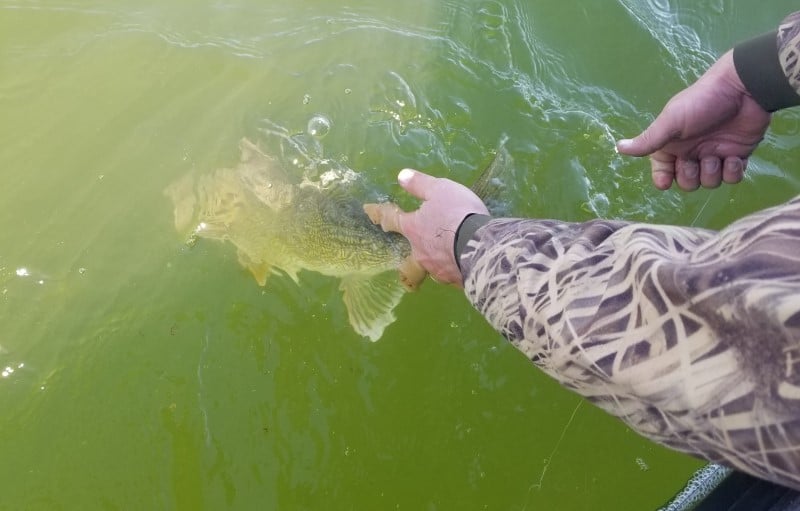
Of course, each lake is different and some of the techniques will need to be adjusted to your favorite body of water. Don’t be afraid to go out and try something new, options are almost endless on the ways to catch the coveted walleye.
Being adaptive is what separates the average walleye fisherman from the inexperienced. In other words, don’t get stuck in a rut using the same presentation over and over again. Be versatile when you fish walleyes, and always play their mood.
Good fishing everyone.
